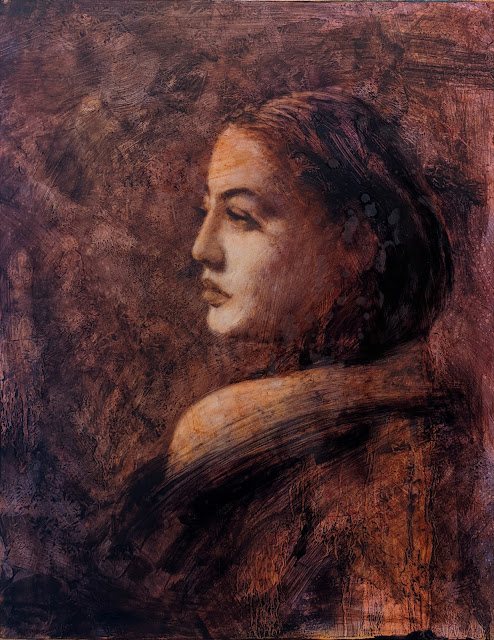by Lisa Larrabee
One technique that I love to use while drawing or painting is a reductive process. You begin by using your chosen medium to tone the surface. You can use graphite, charcoal, soft pastel or oil paint. This establishes a unifying value to work from. The reductive aspect is that you remove the medium to reveal the lighter values underneath. You can erase any of the dry mediums and wipe away the oil paint. In this demo, I used both Q-tips and clean brushes to remove the pigment. A little OMS (odorless mineral spirits) can remove the paint back to the surface.
I began toning with transparent earth red oil paint over a panel that already had a light pink layer that was dry. This is why the lifted values only lift out to a light pink and not the original white panel. Any added details were painted with the transparent earth red. One thing that is freeing about this process is that you can wipe away any mistakes and try again.
Once the panel was completely dry, I added darker transparent color while experimenting with textures. Mixing the paint with an alkyd thinned with OMS allowed me to make very fluid expressive brushstrokes. I also used crumpled paper towels to lift textures. Some OMS spatter added a bit more interest.
At this stage I repeat the lift out process. Since the portrait is dry, I can remove paint from the face without disturbing it. I reveal what I choose and leave the textures that I like.
I wanted to push the contrast so I repeated the process yet again. This time adding cooler colors into the mix. It is important to make sure that the pigments chosen are transparent or you will create a hazy opaque layer. A soft semi-opaque layer can create a great effect, but it was not what I wanted here.
Again, I removed pigment from the face and shoulder while the new layer was still wet. The values on the face appear lighter, but they are not. It is their relationship to the other values that changed. As I added darker layers it created the illusion of lightening the values due to the increase in contrast.
This is a fun and flexible process to try. It also gave me another demo to experiment on (which is where I play!). In a future post, I will share how this demo transformed in
Changing Direction.
~ Lisa





